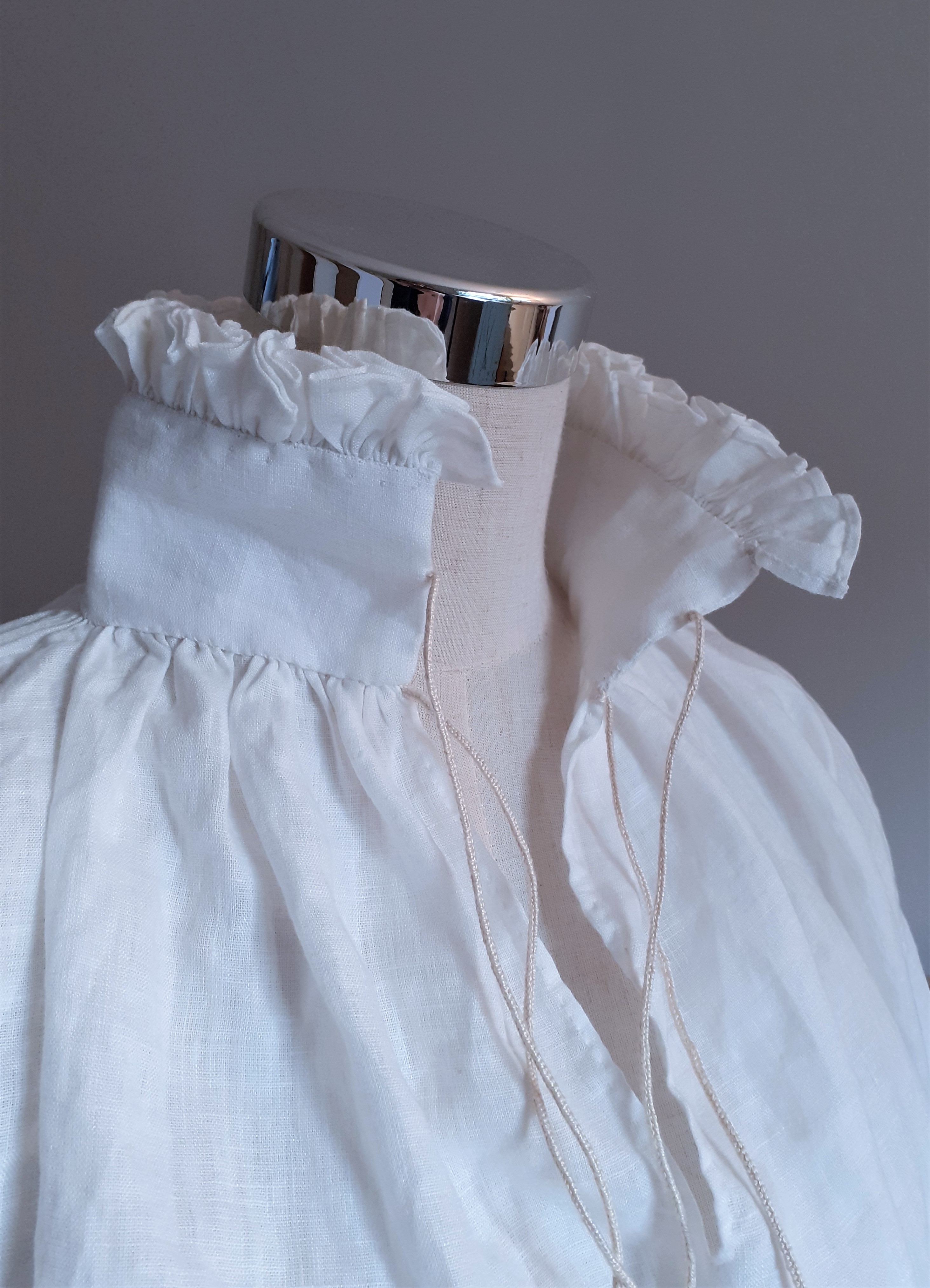This tutorial is made with the support of my Patreons. Support me to help me make more free tutorials!
The Skjoldehamn hood is a find from the 11th century, and because it is the only find of this type of garment (from Scandinavia) dated close to the Viking age period, it is often used as a Viking/Iron age garment by reenactors.
What you need:
- Fulled wool cloth 140* 80 cm.
- Linen or wool thread for sewing.
- Pen, measuring tape, scissors, needle, pins, iron.
- A small amount of patience.
Historical thoughts:
We don’t know who the garment belonged to; man or woman, rich or poor, or if the wearer considered themself a part of the Viking culture, the native Sami culture, or both. The clothing was found in a bog burial in northern Norway and the garment items resemble modern Sami clothing according to articles I found on the subject. But the hood also reminds us of the later medieval hoods, although it has square gores. Hoods with slits over the shoulders, or long cloaklike hoods can be seen from earlier periods in Europe.
All considered, it is a good choice to make if you need a warm garment for iron-age clothing and want a hood, at least if you have a north Scandinavian-based outfit, a Birka-based Viking outfit might have had a hat instead. Overall, the hood is probably more common in reenacting than it was during it’s lifetime, but who does not want a practical garment when it is cold or wet?
Materials:
Most outdoor clothing that has been found from the period seems to be practical rather than decorative. Choose a warm and sturdy fabric, slightly fulled, and use wool or linen thread for sewing. The original has a seam on top of the head to give the hood some shaping, and a pair of cords on the side to pull it closer to the head. This tutorial is a simplified version without these elements, but feel free to add them if you like. And don’t be afraid of piecing together the hood if needed, piecing is very historical!
How to make the pattern:
The hood is constructed with two long rectangles (or one piece folded at the top) and two squares.
This guide give you a hood similar to the original, covering your shoulders but not your arms. You could also make a longer one by lengthening measure B.
A is the depth of the hood, measure from the face where you want the opening to be, around your head and back. Divide the measurement in 2. I like deeper hoods to get protection from wind and rain, I usually have 32 cm.
B is the length of the hood from the head down to the shoulder, measure yourself from the top of the head, following your body, to the shoulder point (where the shoulder ends). Mine is 60 cm.
Measurement C is the face opening, measure around the whole face, under the chin, to get an opening. Try pulling the measuring tape “on and off” the head so you know if the opening is big enough to be comfortable. I like a looser opening to accommodate hairstyle/veils. Divide the measurement you get by 2. Mine is 34 cm.
Measurement D is B-C; the length of the hood minus the opening, 26 cm on my hood. D is also the sides of the gores.
You can make a paper pattern with these measurements. If you want to include seam allowance while drafting the paper pattern, add 2 cm to all measurements before drawing the pieces. Otherwise, do it directly on the fabric.
How to make the hood:
Put the pattern pieces on the fabric and add seam allowance by drawing 1 cm outside all paper pieces.
You may cut the long rectangle in one piece, or in two pieces that are sewn together on top of the head. Cut out 2 square gores, one for the front and one for the back.
If this is your first hood, basting it together is a good choice to try out the fit. if you like it, leave the basting thread in as a guide while sewing. If you want to adjust anything it is easier to remove basting than a sewn seam.
- Start with sewing the seam on top of the head, if you have one.
- Sew one side of each gore to the rectangle, right side to right side.
- After that, fold the rectangular piece at the top to make it look like a hood, and pin the gores to the rectangle. Sew the gores from the bottom and up.
- In the back, you continue with the seam all the way up to the top.
- Finish the face opening by folding in the raw edge, press it and whip stitch it in place.
- Repeat with the bottom edge.
Tip: In the front, sew the hood together 1 cm above the gore for added durability, and then leave the face opening.
Seams:
Sew the hood with backstitching to make it sturdy, or use running stitches if you are in a hurry.
Finish the seams by pressing the seam allowance, cut one side down and press it to that side, and whip stitch it down for added strength. I like to fold the seam allowance toward the larger piece; in this case, I sew the seam allowance down to the main hood and not the squares. In the back seam you can fold it either way.














































































































 Fancy blue coat in thick woollen twill, with silk decorations and woollen tablet weave
Fancy blue coat in thick woollen twill, with silk decorations and woollen tablet weave







